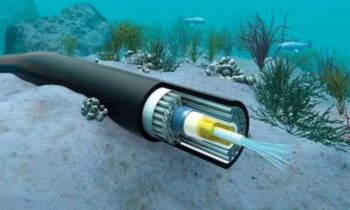Hughes Network Systems is now beginning to provide faster internet speeds in order to compete with its primary industry rival SpaceX, following the launch of its next-generation satellite.
Hughes this week announced that the Maryland-based company has introduced new high-speed satellite internet plans with download speeds up to 100 megabits per second (Mbps) for its customers in the Americas. As a result, it approaches the 25–220 Mbps Starlink internet speeds offered by SpaceX a little bit.
On July 29, Hughes launched Jupiter 3, also known as EchoStar XXIV, a next-generation satellite. The internet satellite was launched into a geosynchronous orbit 22,236 miles (35,786 kilometers) above Earth by a SpaceX Falcon Heavy rocket. Hughes is depending on its Jupiter 3 satellite to provide connectivity to rural areas, in contrast to SpaceX, which is constructing a constellation of Starlink satellites in low Earth orbit, or about 342 miles (550 kilometers) above Earth.
“This purpose-built satellite is engineered uniquely to meet our customers’ needs and target capacity where it’s needed most, such as the most rural regions of the Americas, so they can stay connected to the applications and services they depend on every day,” Hamid Akhavan, CEO of EchoStar (Hughes’ parent company), stated in a statement. “Whether helping a student in Mexico expand her horizons with access to technology, connecting a farmer in Idaho with the tools to monitor his crops, or connecting a senior in Montana to her doctor via a telehealth appointment, JUPITER 3 will connect our customers to what matters most.”
Jupiter 3 is massive, even though it is much farther away than the satellites of Starlink. The ultra-high density satellite is one of the biggest communication satellites in the world, with a size comparable to a school bus and a weight of over 20,000 pounds (9,000 kg). Jupiter 3 primarily uses the Ka-band frequencies, which span from 26.5 to 40 gigahertz. This allows data to be transmitted to Earth via 300 spot beams, covering a large area and minimizing congestion problems. Spot beams effectively distribute and focus satellite communication signals to particular areas of the planet, improving coverage and minimizing interference.
Although Hughes asserts that Jupiter 3 has a dedicated fiber backbone to reduce latency, the distance does still present an issue for the amount of time it takes for the data to reach Earth. Because of the Starlink satellites’ lower altitude, data has to travel less distance, which lowers latency and increases the satellite internet’s ability to compete with on-the-ground internet services.
Whether Hughes can rival SpaceX or whether the two services can eventually work in tandem is still up for debate. But one thing is for sure: we are definitely living in the satellite internet era.



